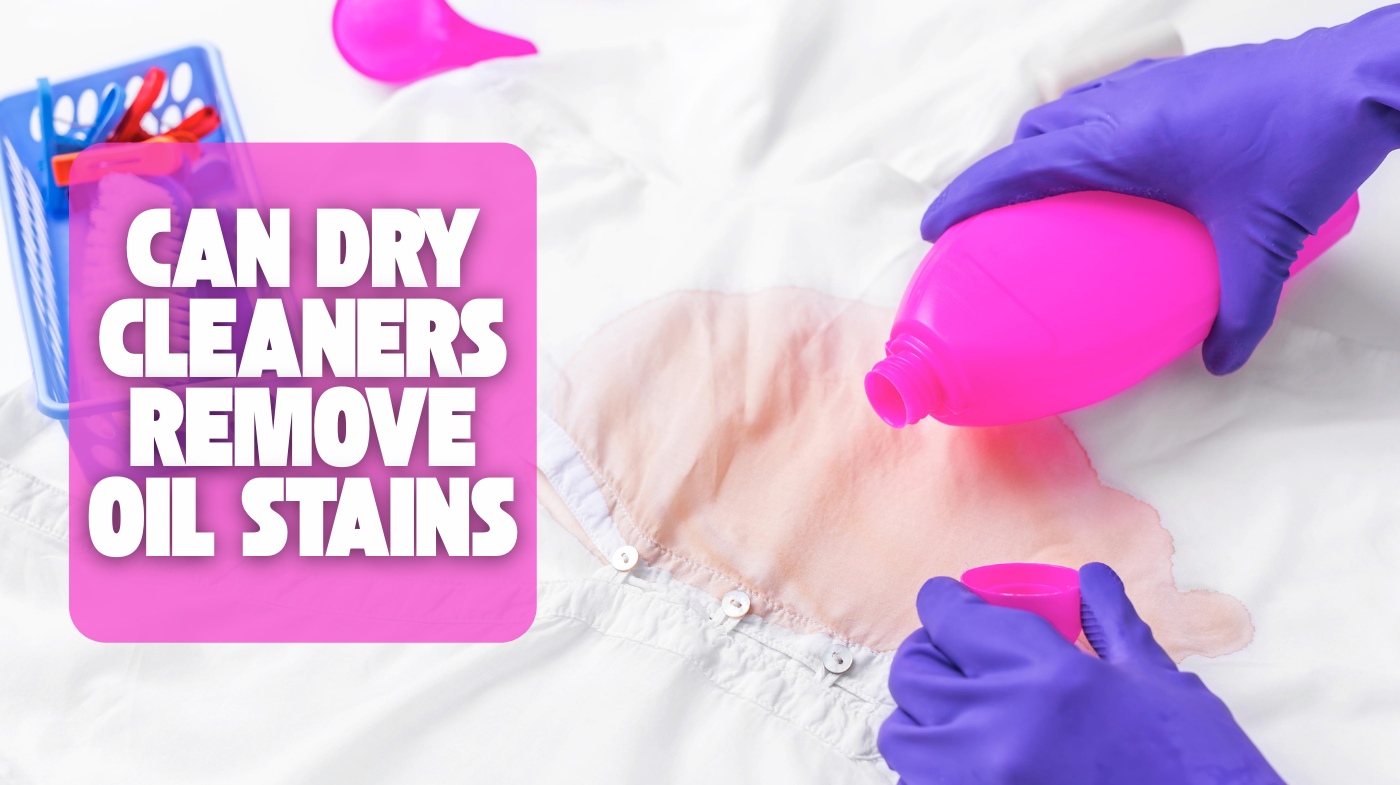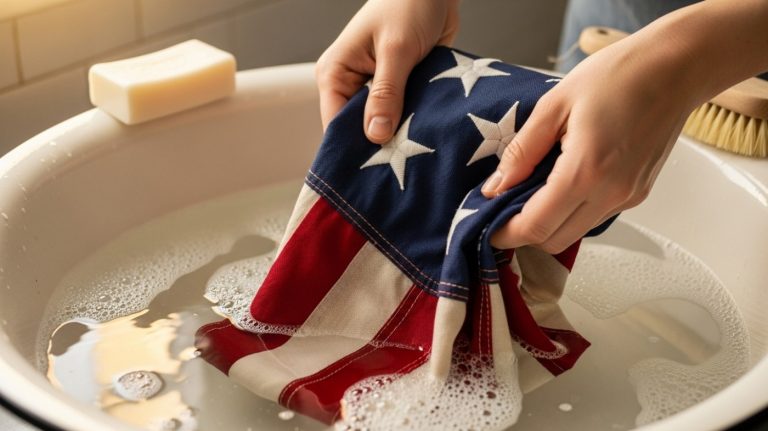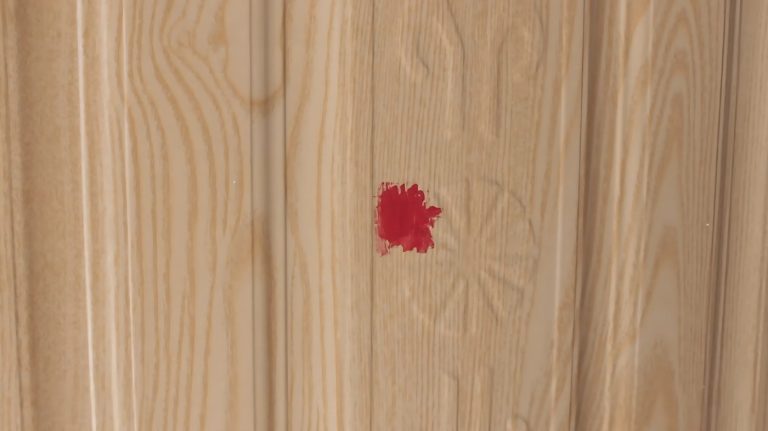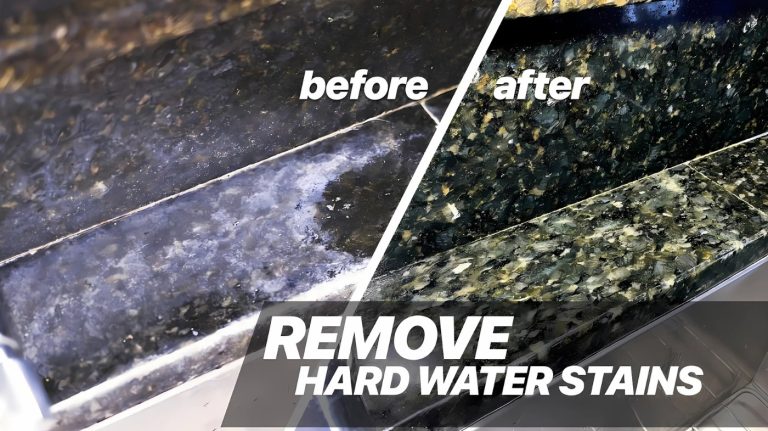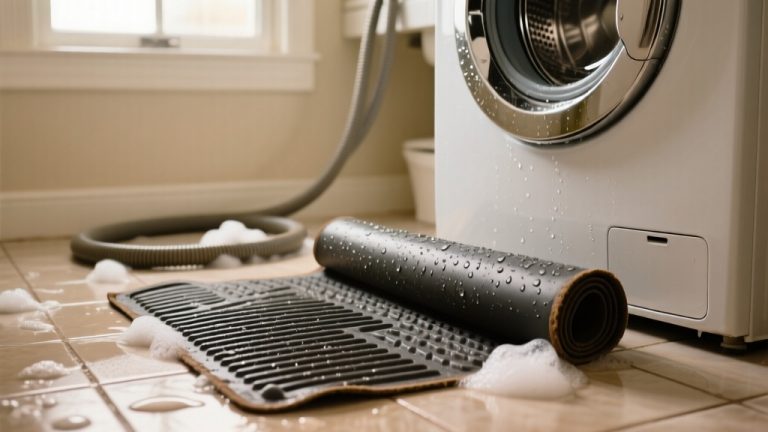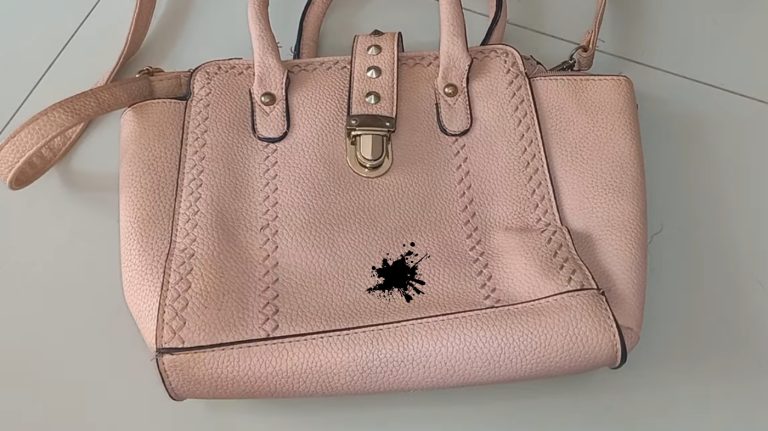Can Dry Cleaners Remove Oil Stains? Discover the Truth
You can trust dry cleaners to remove oil stains effectively because they use specialized solvents like perchloroethylene that dissolve oils deep within fabric fibers where water-based detergents fail.
These solvents penetrate, break down, and lift cooking oils, automotive grease, and makeup oils without damaging delicate fabrics. Pre-treatments and controlled heat enhance cleaning efficiency, making dry cleaning superior to traditional washing for stubborn oil stains.
Exploring how solvents, fabric types, and stain age affect results reveals why professional methods excel.
Key Takeaways
- Dry cleaners use specialized non-polar solvents to dissolve and remove oil stains more effectively than water-based detergents.
- Pre-treatment with spotting agents enhances solvent penetration and breaks down oil before the main cleaning process.
- Fresh oil stains respond best; older stains require multiple treatments due to deeper fiber penetration and oxidation.
- Delicate fabrics need milder solvents to avoid damage during oil stain removal by dry cleaning.
- Dry cleaning machines employ heat, agitation, and drying cycles to fully dissolve and evaporate oil residues from fabrics.
How Dry Cleaning Works on Oil Stains?
Although oil stains repel water, dry cleaning effectively removes them by using specialized solvents that dissolve oils without the need for water. You’ll find solvents like perchloroethylene (perc) and hydrocarbon variants break down oil molecules chemically, penetrating fabric fibers where water-based detergents fail.
Perc’s strong solvency power tackles oils efficiently, while hydrocarbon solvents offer gentler cleaning for delicate fabrics. During the process, heat and gentle agitation enhance solvent penetration and oil breakdown. Steam may also assist solvent action by improving stain dissolution.
Perc’s power and gentle hydrocarbon solvents, combined with heat, agitation, and steam, effectively dissolve oil stains.
Pre-treatment with targeted spotting solutions further breaks down oils before the main cleaning cycle. After dissolving oils, the fabric is rinsed in solvent, then dried to evaporate residues, preventing oil re-deposition.
Types of Oil Stains That Respond Well to Dry Cleaning
Dry cleaning solvents target a range of oil-based stains that resist conventional laundering methods. You’ll find that cooking oil, automotive grease, and makeup oil stains respond particularly well to professional dry cleaning.
These solvents dissolve oils without water interaction, preserving fabric integrity while effectively breaking down hydrophobic compounds. Perc is highly effective at breaking down oil stains without water, making dry cleaning preferable for these stubborn marks.
The process avoids the use of harsh chemicals or abrasives that could damage delicate fabrics or surfaces, similar to why abrasive cleaners are avoided on quartz countertops.
| Oil Stain Type | Common Sources | Dry Cleaning Response |
|---|---|---|
| Cooking Oil | Kitchen spills, frying | Solvents break triglycerides efficiently |
| Automotive Grease | Motor oils, lubricants | Requires pre-treatment, effective removal |
| Makeup Oil-Based Stains | Foundation, lipstick | Penetrates oils, prevents pigment spread |
The Role of Solvents in Removing Oil Stains
When tackling oil stains, solvents play a crucial role by chemically dissolving the non-polar oil molecules that cling stubbornly to fabric fibers. You’ll find that perchloroethylene (Perc) is the most common solvent, prized for its strong grease-cutting ability without using water.
Hydrocarbon solvents offer a gentler alternative for delicate fabrics like silk and wool, breaking down oils while preventing damage. These non-polar solvents penetrate deeply, loosening oil from fibers more effectively than water-based detergents. Mechanical agitation during dry cleaning further aids solvent action, lifting stains efficiently.
Because solvents evaporate quickly, they leave no residue and preserve fabric integrity by avoiding swelling or shrinkage. This solvent-based approach excels at removing complex oils that traditional washing might set permanently, making it indispensable for effective oil stain removal in dry cleaning.
Modern dry cleaning machines are fully enclosed with solvent recovery and purification systems to minimize solvent loss and environmental impact, ensuring environmental controls.
Additionally, prompt treatment and proper cleaning methods are essential to prevent oil stain penetration into fabric fibers, which can make removal more difficult.
Pre-Treatment Techniques for Enhanced Oil Stain Removal
Since oil stains begin to penetrate fabric fibers quickly, acting immediately with proper pre-treatment techniques greatly improves removal success.
First, gently blot excess oil with a paper towel without rubbing to prevent deeper embedding. Lay the garment flat for precise application. Check the care label to select safe methods, especially for delicate fabrics requiring cold water and gentle agents.
Blot oil gently without rubbing, lay flat, and follow care labels for safe, effective stain treatment.
Apply liquid dish soap or specialized stain removers directly to the stain, gently working it in with fingers or a soft brush in circular motions.
For delicate fabrics, consider dry absorbents like cornstarch or talcum powder, letting them sit for at least 30 minutes before brushing off.
After 5–15 minutes dwell time, blot excess treatment to lift residues. Promptly take the garment to a dry cleaner to maximize stain removal effectiveness.
Effectiveness of Dry Cleaning Compared to Traditional Washing
Although traditional washing methods are widely accessible, they often fall short in effectively removing oil stains compared to dry cleaning. Dry cleaning employs chemical solvents like perchloroethylene that dissolve oils and penetrate fabric fibers, breaking down grease where water-based detergents cannot.
These solvents avoid water interaction, preventing oil redeposition, a common issue during washing. Controlled heat and agitation in dry cleaning further enhance stain removal without damaging the fabric.
In contrast, washing relies on water and detergents effective mainly on water-soluble stains but less so on oily residues, sometimes spreading stains or weakening fabric. Dry cleaning also better preserves delicate textiles by minimizing shrinkage and distortion, ensuring longer garment life.
For stubborn or set-in oil stains, dry cleaning provides a more efficient, fabric-safe solution than traditional washing. Prompt action and repeated treatment cycles are often necessary to fully remove tough stains and prevent permanent damage.
Impact of Fabric Type on Oil Stain Removal
How does fabric type influence the effectiveness of oil stain removal in dry cleaning? The fiber composition profoundly impacts oil absorption and solvent interaction.
Natural fibers like cotton absorb oil deeply, requiring thorough treatment, while synthetics hold oil on the surface, affecting solvent access. It is also important to monitor cleaning process to avoid damage during stain removal.
Delicate fabrics such as silk and wool need specialized, milder solvents to avoid damage. Fabric weave also matters: tight weaves limit solvent penetration, and loose weaves allow deeper oil absorption, demanding more aggressive cleaning.
Dry cleaners often use dry cleaning solvents that are especially effective against oil stains to enhance removal based on fabric sensitivity.
Textured fabrics trap oil in surface fibers, complicating removal. Additionally, solvent choice depends on fabric sensitivity to prevent fiber damage and color alteration.
Challenges With Older or Set-In Oil Stains
When oil stains have set in over time, they’ve typically bonded deeper within fabric fibers, making them much harder to remove. You’ll often need multiple treatments with specialized solvents to break down these stubborn residues effectively.
Understanding this challenge is key to managing expectations and selecting the right cleaning approach. Professional dry cleaners use advanced solvents and equipment designed to dissolve stain bonds at the molecular level, surpassing water-based cleaning methods.
Similar to how penetrating sealers protect granite by preventing absorption, these solvents work to penetrate fibers and lift deeply embedded oils.
Difficulty Removing Old Stains
Since oil stains penetrate deeply into fabric fibers over time, removing older or set-in stains presents significant challenges. The oil molecules diffuse and bond strongly due to oxidation and heat exposure, making extraction difficult.
You’ll find that dry cleaning solvents struggle to access these embedded oils, reducing their effectiveness. Professional dry cleaning, however, uses special solvents designed to dissolve oily residues effectively without harming fabric integrity.
Three key difficulties include:
- Chemical changes—oxidized and polymerized oils form cross-linked compounds resistant to solvents.
- Deep fiber penetration—oil resides beneath the fabric surface, limiting solvent reach.
- Fabric sensitivity—delicate materials risk damage from aggressive treatments needed to tackle old stains.
These factors combine to complicate stain removal, requiring specialized expertise and treatment beyond standard dry cleaning methods to preserve fabric integrity while addressing the stubborn residues of aged oil stains.
Multiple Treatments Needed
Although tackling oil stains can be frustrating, you’ll often need multiple treatment cycles to fully remove older or set-in residues. Oil molecules deeply penetrate fibers, requiring repeated pre-treatments, solvent applications, and rinsing.
Dry cleaning solvents like perchloroethylene and hydrocarbons work gradually, so persistence improves results without damaging fabrics. However, delicate materials demand cautious handling to avoid weakening or discoloration.
Proper preparation and inspection of the stained area can improve cleaning effectiveness by tailoring treatments to the fabric type and stain severity, similar to how preparation methods are essential for cleaning unlacquered brass.
| Treatment Step | Purpose |
|---|---|
| Pre-treatment | Break down grease before cleaning |
| Solvent Application | Dissolve and lift oil residues |
| Repeat Cycles | Enhance stain penetration |
Professional Dry Cleaner Methods for Tackling Oil Stains
You start by identifying the stain type and fabric to choose the right pre-treatment agents. Understanding the stain source is crucial since oil stains penetrate fabric fibers quickly, affecting the choice of treatment.
Selecting a solvent that matches the fabric’s compatibility helps prevent damage during cleaning. Next, you select solvents based on fabric sensitivity and oil composition, often combining enzymatic and hydrocarbon options.
Finally, you implement multi-step cleaning protocols, including targeted spot treatments and controlled solvent cycles, to maximize oil removal without damaging fibers.
Stain Pre-Treatment Techniques
When tackling oil stains, acting quickly and preparing the garment properly are essential to prevent the stain from embedding deeply into the fibers. First, gently blot excess oil without rubbing to avoid spreading. Lay the garment flat and check the care label to prevent damage.
Next, apply pre-treatment agents like enzyme-based solutions or dish soap, working them in with soft, circular motions to break down oil molecules. Baking soda paste may also be used to absorb grease. Allow these treatments to penetrate for 5–10 minutes.
Finally, professionals use mechanical agitation with soft brushes and carefully control heat and steam to enhance solvent effectiveness. These pre-treatment techniques markedly improve the chances of complete oil stain removal.
Key steps include:
- Blot excess oil and inspect fabric
- Apply enzyme or grease-fighting agents gently
- Use mechanical agitation and controlled heat
Solvent Selection Process
Since selecting the right solvent directly impacts oil stain removal effectiveness and fabric preservation, professional dry cleaners carefully evaluate multiple factors before treatment. You’ll consider the oil type—motor oil, cooking oil, or makeup grease—to match solvent efficacy.
Dry cleaning solvents like perchloroethylene, hydrocarbons, and silicone-based agents are specifically chosen for their ability to dissolve oil-based substances.
Fabric compatibility is vital; silk and wool require gentler hydrocarbon or silicone-based solvents, while sturdier fabrics tolerate perchloroethylene (PERC). Environmental and health regulations steer you toward lower-toxicity, less volatile options.
Testing solvents on hidden fabric areas prevents damage. You’ll also factor in solvent drying time and availability. Application methods, like spotting guns or commercial machines, rely on solvent properties for ideal penetration and extraction.
Multi-Step Cleaning Strategies
Selecting the appropriate solvent sets the foundation for effective oil stain removal, but tackling stubborn or complex stains often requires a multi-step cleaning strategy.
You’ll start with pre-treatment, applying specialized spotting solutions or detergents to break down surface oils. This step is crucial because oil stains can set into fabric fibers if untreated, making early intervention essential. Next, solvent-based cleaning uses targeted chemicals like perchloroethylene to penetrate fibers and dissolve embedded oils.
Finally, heat and mechanical agitation enhance solvent action, loosening residues without damaging fabrics.
- Pre-treatment: Apply spotting agents and gently work them into the fabric, allowing 5–10 minutes for penetration.
- Solvent wash: Use non-water-based solvents combined with controlled heat and agitation.
- Post-treatment: Inspect, re-treat if needed, and dry under regulated conditions to prevent residue setting.
Home Remedies Versus Professional Dry Cleaning for Oil Stains
Although you might be tempted to treat oil stains at home using common remedies like dish soap or baking soda, professional dry cleaning offers a more dependable and effective solution.
Home methods often rely on absorbents and detergents that struggle to dissolve hydrophobic oils fully, especially on delicate fabrics. Dry cleaners use specialized chemical solvents such as perchloroethylene, which penetrate fabric fibers and break down oil molecules at a molecular level, achieving deeper stain removal.
These solvents are specifically designed to target and dissolve fat, grease, oil-based stains that are typically challenging to remove with water-based methods.
Home remedies absorb but often can’t dissolve oils; dry cleaning uses solvents that break down oil deeply within fibers.
Professionals also provide precise pre-treatment tailored to the fabric and stain type, improving outcomes. Controlled heat and agitation in dry cleaning further enhance solvent effectiveness without risking fabric damage.
While home remedies can help fresh stains, professional dry cleaning ensures thorough, safer removal of oil stains, especially those that are older or embedded.
Factors Influencing the Success Rate of Oil Stain Removal
You need to consider the stain’s age since fresh oil marks respond better to solvents than older, set-in stains. Older stains have chemically bonded with fabric fibers, making them more resistant to removal chemical bonding.
Fabric type also plays a vital role, as durable materials tolerate aggressive cleaning agents while delicate textiles require gentler methods. Additionally, effective pre-treatment tailored to the oil and fabric enhances solvent penetration and improves removal success.
Stain Age Impact
When oil stains age, their chemical composition changes, causing them to bond more firmly with fabric fibers and making removal increasingly difficult. As time passes, oxidation hardens the residue, reducing its solubility in dry cleaning solvents.
You’ll find that prompt treatment considerably boosts removal success, while older stains often just fade rather than disappear completely.
Consider these key factors:
- Chemical hardening intensifies fabric bonding, complicating solvent penetration.
- Pre-treatment with enzymatic agents or dish soap can improve removal rates by up to 80%.
- Environmental conditions like heat accelerate setting, embedding oil deeper into fibers.
- Washing in the hottest water suitable for the fabric can dissolve grease residues more effectively before dry cleaning.
Understanding how stain age affects chemical and physical properties helps you select effective pre-treatment and cleaning methods, maximizing dry cleaning results on oil stains.
Fabric Type Role
The effectiveness of oil stain removal hinges considerably on the fabric type involved, as different materials interact with oils and solvents in distinct ways. Natural fibers like cotton absorb oils deeply, complicating extraction, while synthetics such as polyester repel oils, easing removal.
Fabric porosity and weave density affect solvent penetration; loosely woven, porous fabrics allow better solvent action, whereas dense weaves trap oils, needing intensive treatment.
Delicate fibers like silk require milder solvents to prevent damage, contrasting with cellulose-based fibers that tolerate stronger solvents like perchloroethylene. Fabric finishes may either hinder or aid oil removal depending on their chemistry.
Additionally, fabric color and thickness influence stain visibility and solvent penetration, impacting treatment strategies. It is important to note that rubbing or pressing an oil stain at home can spread the grease deeper into fabric fibers, complicating removal.
Pre-Treatment Importance
Although dry cleaning solvents play a crucial role in removing oil stains, pre-treatment considerably enhances their effectiveness by breaking down grease residues beforehand. Applying dish soap or enzyme-based stain removers directly to the affected area disrupts oil molecules, allowing solvents to penetrate more efficiently.
For fresh stains, using a strong solution of laundry detergent in hot water and scrubbing with a stiff brush before dry cleaning can significantly improve results fresh stains.
You should let the pre-treatment sit for 10–15 minutes, then gently rub it in with a soft brush or fingers to distribute agents without damaging the fabric. Blot excess oil to prevent spreading before professional cleaning.
Key factors influencing success include:
- Timing: Early pre-treatment prevents oil from setting.
- Stain severity: Thick deposits require repeated applications.
- Temperature: Warm rinses after treatment improve emulsification and lift.
Frequently Asked Questions
How Long Does the Dry Cleaning Process Take for Oil-Stained Garments?
You can expect dry cleaning for oil-stained garments to take anywhere from 24 hours to 3 days. Light stains on basic fabrics often clear within a day.
However, heavy or old oil stains require special pre-treatment and possibly multiple cleaning cycles, extending the process.
Delicate fabrics or complex garments may need extra care, further increasing duration.
Factors like workload and environmental protocols can also influence turnaround time.
Are Dry Cleaning Solvents Safe for the Environment and Human Health?
Solvents in dry cleaning are a double-edged sword. While they effectively clean, most, like perchloroethylene (PCE), persist in the environment and pose health risks, including neurotoxicity and potential cancer.
You’ll find that emissions contribute to air pollution, and exposure during handling can be hazardous. Regulations urge safer alternatives, but these newer solvents still need thorough evaluation.
Can Dry Cleaning Remove Oil Stains From Leather or Suede Materials?
You can rely on professional dry cleaning to remove oil stains from leather and suede effectively. Dry cleaning solvents specifically dissolve oil-based residues without harming delicate fibers.
Quick blotting and absorbent powders precede solvent treatments for ideal results. Experts tailor methods to material type, preventing damage.
Post-cleaning conditioning or protective sprays restore texture and prevent future staining. Acting promptly increases your chance of full oil stain removal while preserving your item’s integrity.
What Should I Do if an Oil Stain Reappears After Dry Cleaning?
If an oil stain stubbornly surfaces after dry cleaning, start by swiftly speaking to your specialist. Skilled stain savants can reassess and apply specific solvents like Perc or hydrocarbons, sometimes requiring several sessions.
Steer clear of heat, which catalyzes staining, and suggest wet cleaning if needed. Be sure to share detailed stain specifics upfront, and avoid aggressive rubbing before treatment.
Persistent problems often demand patient professional persistence for perfect purification.
Get Rid of Oil Stains Without Damaging Your Fabrics
When it comes to oil stains, dry cleaning acts like a skilled surgeon wielding specialized solvents to dissect and dissolve stubborn residues. You’ll find it far more precise and effective than traditional washing, especially on fresh or delicate fabrics.
While home remedies might flicker like a candle in the wind, professional dry cleaning offers a powerful, targeted approach. Remember, the sooner you act, the better the chances of erasing oil stains completely from your garments.

